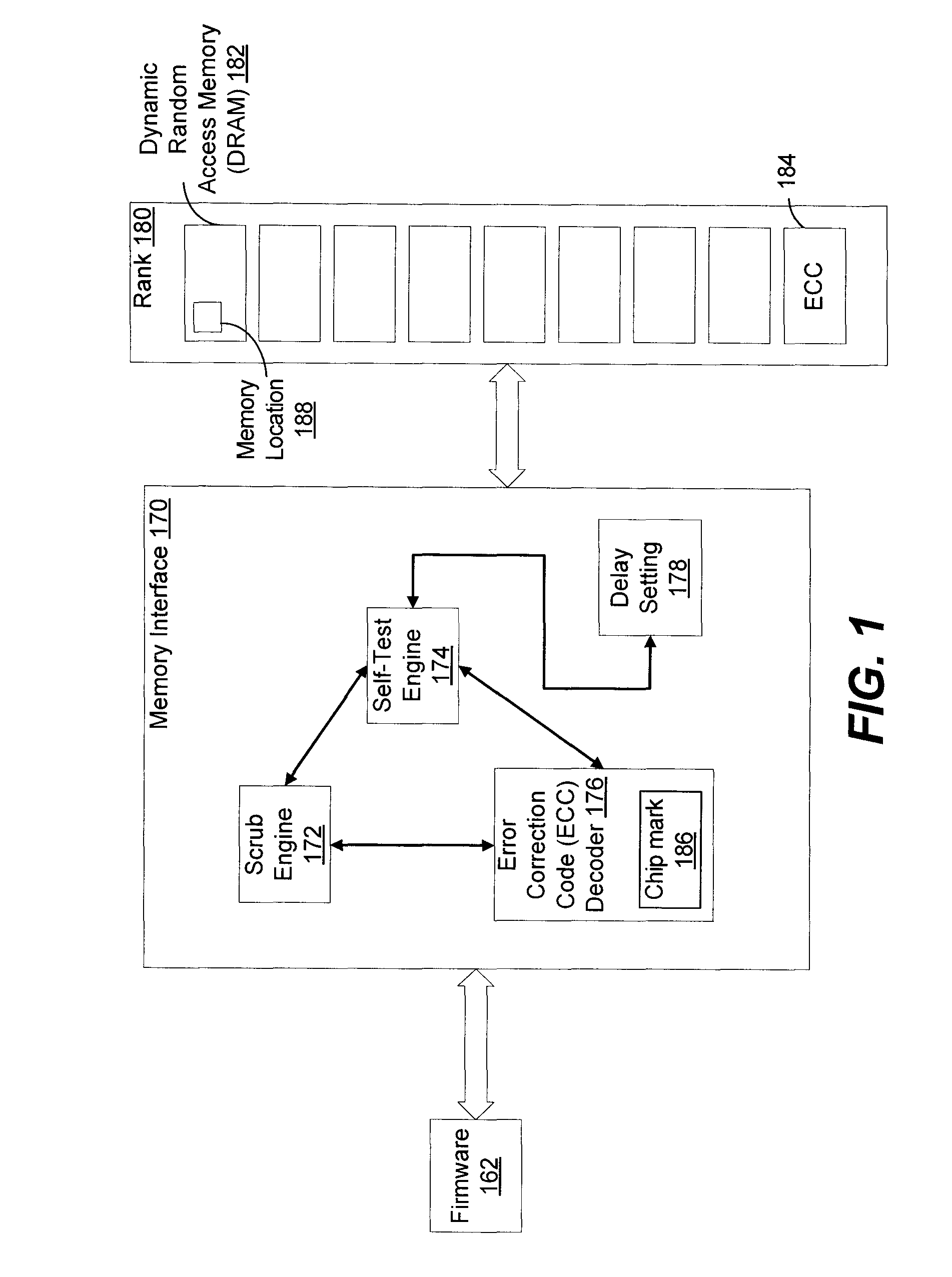Memory testing with selective use of an error correction code decoder
a code decoder and memory technology, applied in error detection/correction, instruments, computing, etc., can solve problems such as memory cell errors, memory cell errors, and other errors that are left unnoticed, and achieve the effect of detecting memory cell errors, avoiding other errors, and avoiding memory cell errors
- Summary
- Abstract
- Description
- Claims
- Application Information
AI Technical Summary
Benefits of technology
Problems solved by technology
Method used
Image
Examples
Embodiment Construction
[0015]Systems and methods of performing memory testing with selective use of an error correction code (ECC) decoder are disclosed. For example, memory testing may selectively use an error correction code (ECC) decoder to direct an access (e.g., a read access or a write access) of user data associated with a memory location to the ECC decoder, while the memory location is being tested by writing test patterns to the memory location. A test pattern may be written to the memory location and compared to a value read from the memory location. A fault may be detected when the test pattern and the value read from the memory location do not match. The chances of detecting a fault may be improved by using several different test patterns designed to detect various kinds of faults (e.g., faults which may not be detectable by using other memory testing algorithms, such as parity checking).
[0016]The disclosed techniques may enable runtime memory testing by directing an access (e.g., a read acces...
PUM
 Login to View More
Login to View More Abstract
Description
Claims
Application Information
 Login to View More
Login to View More - R&D
- Intellectual Property
- Life Sciences
- Materials
- Tech Scout
- Unparalleled Data Quality
- Higher Quality Content
- 60% Fewer Hallucinations
Browse by: Latest US Patents, China's latest patents, Technical Efficacy Thesaurus, Application Domain, Technology Topic, Popular Technical Reports.
© 2025 PatSnap. All rights reserved.Legal|Privacy policy|Modern Slavery Act Transparency Statement|Sitemap|About US| Contact US: help@patsnap.com



